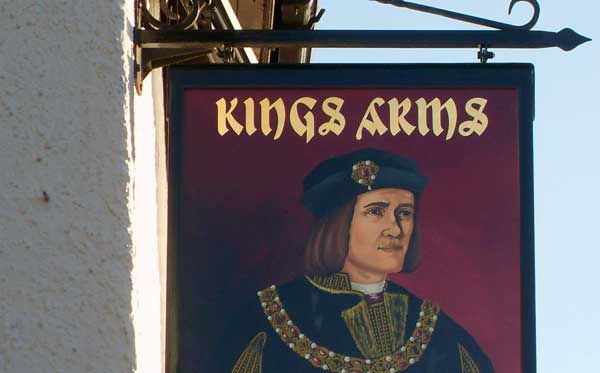
“We want to re-start the War Of The Roses by promoting Richard in a really big way! Football’s finished, shopping’s finished as a topic of debate in York. We’d like everyone to be in the pub in York arguing about Richard III – was he a good king or a bad king?”
That was the rallying cry of Yorkshire Museum head curator Andrew Morrison as the city launched a year-long programme of events marking the life and reign of Richard III.
Since the discovery of Richard’s remains under a Leicester car park, huge interest has been sparked in this notorious monarch. There’s also been an unseemly wrangle about where to lay the old fellow to rest.
Capitalising on this interest, and Richard’s strong associations with York, one of the biggest ever partnerships has been forged to reclaim the king for his favourite city.
Richard III: Rumour and Reality comprises a series of events led by archaeologists, historians and curator. They will probe York’s wealth of documentary evidence, artefacts and the buildings which Richard visited, to celebrate the Plantagenet monarch’s relationship with the city and the county.
Alongside a series of summer events, the first six months of the programme will be dominated by academic research into the myth and legend surrounding Richard.
“We want people to be excited by him and his legacy,” said Andrew Morrison at the project launch, held in the medieval gallery of Yorkshire Museum where the reconstructed head of Richard III is to be displayed.
“In the Kings Arms – that pub everyone goes to because it’s by the river which has his head over the door – people could debate 15th century politics and take on the Lancastrians.”
He described Richard as “York’s king. We’re very proud of Constantine our Roman emperor, but he pales into insignificance compared to Richard III.”
Dr Sarah Rees-Jones, from York University’s Centre for Medieval Studies, said: “We don’t want to be telling people what to think about Richard. We want them to discover the evidence and make up their own minds.”

The Yorkshire Museum has two of the remaining 12 Blue Boar badges which were Richard’s emblem. Now you can buy a modern version of the badge to declare your allegiance.
“If you are poor and come from Acomb like me, you wear a cloth one. If you are from Bishopthorpe Road and middle class you wear a silver one.”
Andrew sees Richard III as the Jimi Hendrix of his day, a man whose enduring fascination stems from the fact he died young. “He only reigns for a couple of years and he gets killed.”
On show at the launch was the York City House Book, which recorded the meeting of city leaders when news of his death in the Battle Of Bosworth filtered through.
“They’re essentially council minutes. They start in 1470 – coincidentally when Richard, Duke of Gloucester comes to prominence – and run through to the present day,” said Richard Taylor, the council’s archives manager.
Twelve gathered in the council chamber on the day of the battle – August 22, 1485 – including William Snawswell, who lived in Barley Hall. The entry for that day records their discovery that many were lost in the battle.
But it is only when a messenger arrives the next day with news that the king is lost that the council records its outrage: he was “piteously slain and murdered to the great heaviness of this city”.
It was a brave statement, considering the incoming king, Henry VII, would not take kindly to an accusation of murder. But there it is, written in black iron gall ink, which has now rusted to a brown colour.
The programme
Councillor Sonja Crisp, York council’s cabinet member for leisure, culture and tourism, said the programme of events was thought to be the first of its kind. It was surfing the renewed wave of interest following the excavation of Richard III’s bones.
“From classrooms to kitchens, people all across the city, county and country were talking about him: who he was, what he did, where he went. We want these conversations to continue and be part of the legacy of Richard’s discovery,” she said.
“So, we thought, why not couple this surge of interest to the abundance of knowledge and source material we hold in this city? Why not build on existing understanding, share it more widely and keep the conversations going?”
Events include:
June 1 on – exhibition of Richard III’s ‘interim tomb’, plus display telling story of Leicester dig: Richard III Museum, Monk Bar
Sunday, June 23, 3.30pm – public lecture, Richard III: History’s man and Shakespeare’s villain: York University
July 2013 – York Museums Trust: Medieval hands-on sessions throughout summer
York Minster: 15th century objects on display in Treasury
- For a full list of events see the York Festivals website
- Partners in the programme include City of York Council, the University of York, York Minster, York Museum’s Trust, York Archaeological Trust, Richard III Museum, English Heritage, Richard III Society and York Theatre Royal
- For all our Richard III coverage click here
